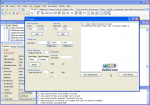
Third and last step on the inheritance: here to describe a situation where this mechanism is required, or better forced, to be adopted, in case we need to create object from a class.
What precisely does it mean?
We always have designed and realized classes with the clear intention to be used as direct prototypes for instantiation of objects.
And that's right; but if you remember we, by talking about inheritance in the two last articles, mentioned that when a method in a class is declared as virtual, it means that every child of the class can override that method, but never it will be forced to do.
Let's face the other side of the medal: how to make necessary a redeclaration by every child of a particular class?
But before the practice, what is the idea guiding us?
Try to think of a general class, so general that it cannot be directly turned into reality: no need to concentrate on informatics applications, the physical reality of every day can help us.



